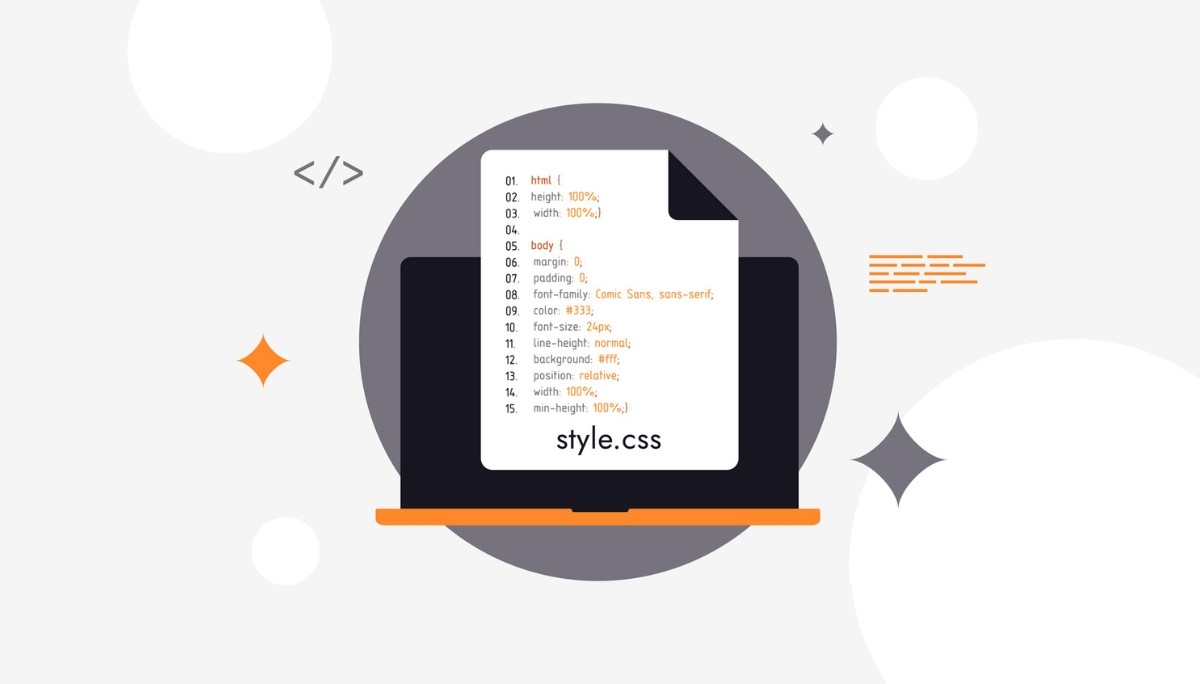What Is Gradient Boosting and How to Prevent Overfitting
By
Samantha Cox
•
Jun 18, 2025
Overfitting can cripple the performance of gradient boosting models, making them unreliable on new data. To prevent overfitting in gradient boosting, you need to apply strategies like regularization, subsampling, and hyperparameter tuning. This article will walk you through these techniques to help you build models that generalize well to unseen data.
Key Takeaways
Gradient Boosting is a powerful ensemble technique that combines weak learners, primarily decision trees, to enhance predictive accuracy by sequentially correcting previous errors.
To prevent overfitting, practitioners can employ regularization techniques such as limiting tree depth, adjusting the learning rate, performing subsampling, and using early stopping during model training.
Hyperparameter tuning, including adjustments to the number of trees, minimum samples per leaf, and feature sampling rate, is essential for optimizing Gradient Boosting model performance and ensuring generalization to unseen data.
Understanding Gradient Boosting

Gradient Boosting is an ensemble method that aims to create a strong predictive model from weak learners. Imagine you have a series of inaccurate models, each just slightly better than random guessing. What if you could combine them in a way that their collective wisdom produces highly accurate predictions? That’s the magic of stochastic gradient boosting.
At its core, the basic idea of Gradient Boosting works by sequentially correcting errors made by previous models in the previous iteration. Each new model is trained to minimize the squared error from the prior model’s predictions. Think of it as a relay race where each runner (model) passes the baton (errors) to the next, aiming to finish the race (prediction) as accurately as possible. This sequential correction ensures that the final model is robust and precise.
The most commonly used base learners in Gradient Boosting are decision trees. These trees are considered weak learners, meaning they only make slightly better-than-average predictions. However, when combined through the Gradient Boosting algorithm, these weak learners create a powerful predictive model. Key points about this process include:
Each tree is trained to predict the errors of the previous trees.
This sequential training helps refine the model’s accuracy.
The combination of multiple weak models results in a strong predictive model.
What sets Gradient Boosting apart from other machine learning algorithms is its ability to handle various types of data and tasks, from regression to classification. A differentiable loss function is used to ensure that each boosting stage incrementally improves the model’s predictions. This method stands out among other boosting methods for its precision and adaptability, highlighting the key differences in its approach.
Regularization Techniques in Gradient Boosting
While Gradient Boosting is a powerful tool, it is not immune to overfitting, especially when applied to complex datasets. Regularization techniques manage the model’s complexity and help it generalize well to unseen data.
Three primary methods can help achieve this: limiting tree depth, adjusting the learning rate (shrinkage), and subsampling. Each technique plays a unique role in refining the model’s performance, which we’ll explore in the following sections.
Limiting Tree Depth
The max_depth parameter is crucial in controlling the maximum depth of decision trees in Gradient Boosting. Limiting the number of levels in each decision tree effectively manages the model’s complexity. This parameter ensures that the trees do not grow too deep, which could lead to overfitting by capturing noise in the training data.
Limiting tree depth creates simpler models that are less prone to overfitting. The number of terminal nodes in the trees is controlled by the max_depth parameter, directly impacting the model’s flexibility. Simpler models tend to generalize better to unseen data, making this an effective regularization technique for deeper trees.
Monitoring the validation error is also crucial when limiting tree depth. As you train your Gradient Boosting model, keeping an eye on the validation error helps identify when the model begins to overfit the training data. This proactive approach ensures that your model remains robust and accurate.
Shrinkage (Learning Rate)
The learning rate in Gradient Boosting controls how much each tree can influence the final prediction. Scaling the contribution of each new model through the learning rate helps mitigate overfitting. A typical learning rate value in Gradient Boosting is 0.1, which provides a balanced approach between model accuracy and overfitting.
Smaller learning rate values decrease the influence of each weak learner, requiring more trees to achieve similar performance. This gradual approach ensures that the model learns slowly and steadily, reducing the risk of overfitting while improving accuracy. The learning rate is a critical parameter that needs careful tuning for optimal model performance.
Shrinkage allows each tree to make a smaller, more controlled adjustment to the model’s predictions. This technique is akin to taking smaller steps when climbing a steep hill, ensuring you don’t overshoot your target and end up with a suboptimal solution.
Subsampling
Subsampling is another effective regularization technique in Gradient Boosting. It involves training each tree on a random subset of the training data rather than the entire dataset. This approach introduces randomness into the model, enhancing its diversity and accuracy.
Training trees on random subsets through subsampling reduces the likelihood of the model fitting noise in the training data, thereby reducing overfitting. This randomness ensures that the model does not rely too heavily on any single subset of data, making it more robust and generalizable to unseen data.
The benefits of subsampling extend beyond just reducing overfitting. It also enhances the model’s performance by allowing it to capture complex patterns and relationships within the data. This method is particularly useful in data mining and other applications where the goal is to uncover intricate insights from large datasets.
Early Stopping in Gradient Boosting

Early stopping is a powerful technique to prevent overfitting in Gradient Boosting. It halts the training process when the loss doesn’t improve over a set number of boosting rounds. By monitoring the validation error, early stopping ensures that the model does not continue to learn from the noise in the training data.
Implementing early stopping can lead to faster training as it reduces the total number of estimators needed. This efficiency is particularly beneficial when working with large datasets or when computational resources are limited. The n_estimators attribute indicates how many trees were included in the final model after applying early stopping, providing a clear measure of the model’s complexity.
Overall, early stopping is a straightforward yet effective method to enhance model performance and prevent overfitting. This technique ensures that your Gradient Boosting model remains both accurate and efficient by keeping the training process in check.
Hyperparameter Tuning for Optimal Model Performance

Hyperparameter tuning is crucial for enhancing the performance of Gradient Boosting models. Carefully adjusting parameters such as the number of trees, minimum samples per leaf, and feature sampling rate significantly improves both model accuracy and training efficiency.
The following subsections explore these hyperparameters in detail and discuss how to tune them for optimal model performance.
Number of Trees
The number of trees, controlled by the n_estimators parameter, plays a critical role in the performance of Gradient Boosting models:
Increasing the number of trees can improve model accuracy.
It also raises computational demands.
Professionals often start with around 100 trees as a common baseline.
The optimal number can vary based on the dataset and model complexity.
Finding the right balance is essential. Too few trees may lead to underfitting, while too many can cause overfitting and increased computational costs. The optimal number of trees, considering all the trees, can be determined through cross-validation, ensuring that the model generalizes well to unseen data.
In practice, starting with a moderate number of trees and gradually increasing them while monitoring validation error can help achieve the best performance in the tree building process. This approach ensures that the model remains both accurate and efficient, providing a reliable initial prediction.
Minimum Samples per Leaf
Setting a minimum number of samples required to create a leaf node is another crucial hyperparameter in Gradient Boosting. A larger minimum number of samples reduces sensitivity to noise and prevents overfitting. This parameter ensures that each leaf node has enough data points to make reliable predictions.
By limiting the minimum number of observations in terminal nodes, you reduce variance in predictions at leaves, leading to more stable and generalizable models. This approach penalizes model complexity, helping to avoid overfitting while maintaining accuracy with observed values. Additionally, the use of neural networks can enhance predictive performance.
In practice, experimenting with different values for the minimum samples per leaf values parameter and selecting the one that yields the best cross-validation performance can enhance model robustness. This balanced approach ensures that the model remains both accurate and generalizable.
Feature Sampling Rate
Modifying the feature sampling rate during splits is another effective technique to reduce overfitting in Gradient Boosting. By introducing randomness through feature sampling, the model becomes more robust and less prone to overfitting. This parameter determines the fraction of features to be considered for each split.
The introduction of randomness helps prevent the model from relying too heavily on any single feature, ensuring a more balanced and generalizable model. The recommended feature sampling rate to reduce overfitting typically falls between 0.5 and 1, providing a good balance between model accuracy and robustness.
In practice, adjusting the feature sampling rate and monitoring its impact on cross-validation performance can help identify the optimal value. This approach ensures that the model remains both accurate and resilient to overfitting.
Cross-Validation for Reliable Model Evaluation

Cross-validation is a crucial technique for providing reliable estimates of model performance and assisting in hyperparameter tuning. K-fold cross-validation, in particular, involves dividing the training data into k smaller subsets, using k-1 for training and 1 for validation. This method improves the accuracy of model evaluation by ensuring that every data point gets a chance to be in the validation set.
Selecting the optimal number of folds is essential as it balances the bias and variance trade-off in model evaluation. Consider the following:
Too few folds may lead to high variance.
Too many folds can increase computational demands.
Typically, a value between 5 and 10 is recommended for most applications.
Efficient data utilization through cross-validation maximizes both training and validation sets throughout the evaluation process, leading to more consistent outcomes. This method ensures that your Gradient Boosting model is both accurate and generalizable, providing reliable predictions on unseen data.
Practical Example: Implementing Gradient Boosting in Python

Implementing Gradient Boosting in Python is straightforward, thanks to popular libraries like Scikit-learn. However, it’s essential to be aware of the limitations, such as its CPU-only implementation, which may not be suitable for large datasets. Despite this, Scikit-learn remains a versatile tool for Gradient Boosting and other machine learning algorithms.
A practical example involves using the Gradient Boosting Classifier from Scikit-learn on the Digits dataset. With an accuracy of 0.98, this classifier demonstrates the power and precision of Gradient Boosting. The key steps involve importing the necessary libraries, preparing the data, fitting the model, and evaluating the predicted values.
Following these steps allows you to leverage the power of gradient boosting and boosting algorithms to tackle various machine learning classification tasks, from classification to regression using a gradient boosting machine, boosting stages. This hands-on approach ensures that you can apply the concepts learned in this guide to real-world applications, enhancing your machine learning projects.
Introducing Fonzi: Your Solution to Hiring Elite AI Engineers
In the competitive world of AI and machine learning, finding the right talent can be a daunting task. This is where Fonzi comes in, a curated AI engineering talent marketplace that connects companies to top-tier, pre-vetted AI engineers through its recurring hiring event, Match Day. With Fonzi, hiring becomes fast, consistent, and scalable, with most hires happening within three weeks.
The platform’s ‘Match Day’ feature streamlines recruitment by enabling employers to interact with pre-vetted candidates efficiently. This not only accelerates the hiring process but also ensures that candidates are a perfect fit for the company’s culture and technical needs. Fonzi’s emphasis on high-signal connections and standardized evaluations reduces hiring bias and fosters a better candidate experience.
Many candidates have successfully secured positions through Fonzi, showcasing its effectiveness in connecting talent with leading tech firms. Whether you’re an early-stage startup or a large enterprise, Fonzi supports your hiring needs, from the first AI hire to the 10,000th. This scalability ensures that you can always find the right talent to drive your projects forward.
Providing automated feedback and communication, Fonzi elevates the candidate experience, ensuring engaged, well-matched talent. This platform is not just about filling positions; it’s about building lasting relationships between companies and AI engineers, driving innovation and success.
Summary
Gradient Boosting is a go-to method for building accurate, reliable models. With the right regularization, tuning, and cross-validation, it can deliver strong performance across a wide range of machine learning problems. But great models also need great people behind them. That’s where Fonzi comes in, connecting you with top-tier AI engineers to bring your ideas to life. From streamlining hiring to reducing bias, Fonzi helps you build a team that moves fast and builds smart. Combine the right tools with the right talent, and there’s no limit to what you can create.




